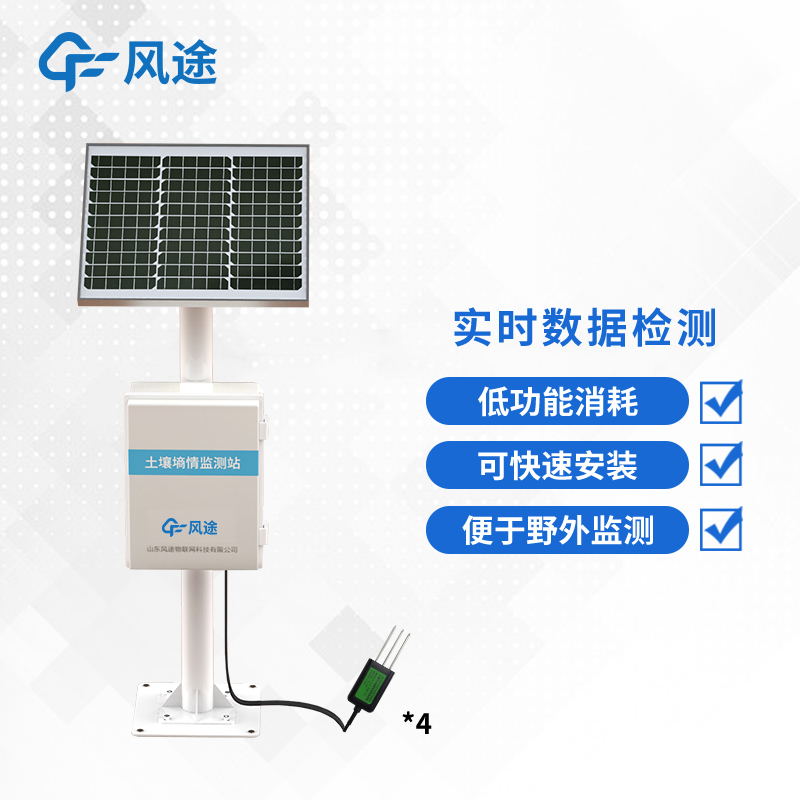Shandong Fengtu IOT Technology Co., Ltd
Sales Manager:Ms. Emily Wang
Cel,Whatsapp,Wechat:+86 15898932201
Email:info@fengtutec.com
Add:No. 155 Optoelectronic Industry Accelerator, Gaoxin District, Weifang, Shandong, China

Sales Manager:Ms. Emily Wang
Cel,Whatsapp,Wechat:+86 15898932201
Email:info@fengtutec.com
Add:No. 155 Optoelectronic Industry Accelerator, Gaoxin District, Weifang, Shandong, China
time:2024-05-11 08:39:09 source:Weather Station viewed:561 time
Irrigation is vital to agriculture, especially in drought conditions, and ensures that crops receive adequate water. Different irrigation methods have specific requirements for measuring and controlling soil water content:
Surface irrigation: water is supplied directly to the field by means of furrow or diffuse irrigation. This method may result in uneven distribution of soil moisture, so regular soil moisture checks are required to ensure that the crop receives the right amount of water.
Sprinkler irrigation: Using sprinkler heads to spray water evenly over the crop, this method allows for more precise control of soil moisture content. By adjusting the timing and intensity of the water spray, irrigation can be optimised based on soil moisture measurements.
Drip irrigation: Water is dripped directly into the soil near the plant roots. This method provides the most precise management of soil moisture and is often used in conjunction with soil moisture sensors to allow real-time monitoring and adjustment of soil moisture.
Micro-sprinkler irrigation: similar to drip irrigation but uses smaller sprinkler heads and is suitable for crops with more demanding water management requirements. Again, monitoring of soil moisture is essential to optimise irrigation schedules.
Subsurface irrigation: Water is supplied through an underground pipework system, reducing water evaporation, but is more expensive to install. Soil moisture measurement may require more specialised sensors.
Moisture monitoring devices are a set of highly accurate instruments used to measure soil moisture, temperature and other parameters in real time. They transmit data to a remote data centre via a wireless network to support agricultural producers in precision irrigation and fertiliser application, thereby improving agricultural efficiency. These devices are typically designed for low power consumption and can be adapted to a variety of power supply options, including solar power, for a wide range of climatic conditions and soil types. They are also equipped with easy-to-use data management platforms and mobile apps, making it easy for users to remotely view and analyse soil conditions to better manage their farmland.

With the rapid development of the Internet of Things, big data, and artificial intelligence technologies, our lives are undergoing a revolutionary change. The application of these technologies not only makes daily life more intelligent and convenient but also greatly improves efficiency and practica...
In industry, liquid level measurement of corrosive media is a critical process, and Corrosive liquid level sensors, such as the YW - 26B, are the primary application instruments. Below is a detailed explanation of the working principle and usage method of such level gauges.The YW - 26B Corrosive liq...
Micrometeorology is a subtle change in climate caused by factors such as small-scale topography, such as localised wind, fog and frost. In certain sections of transmission lines, these micrometeorological phenomena may be exacerbated by topographical influences, for example, leading to conductor ice...
Deploying field intelligent meteorological observation stations in agricultural areas to build a meteorological monitoring network covering the entire region and accurate to the kilometre level allows for continuous intelligent monitoring of soil moisture and climatic conditions. By analysing the ke...